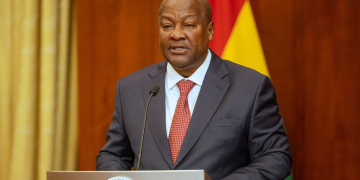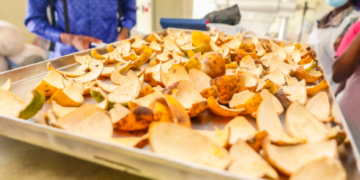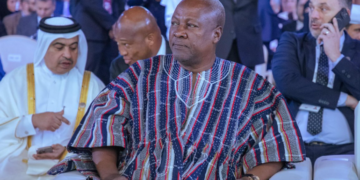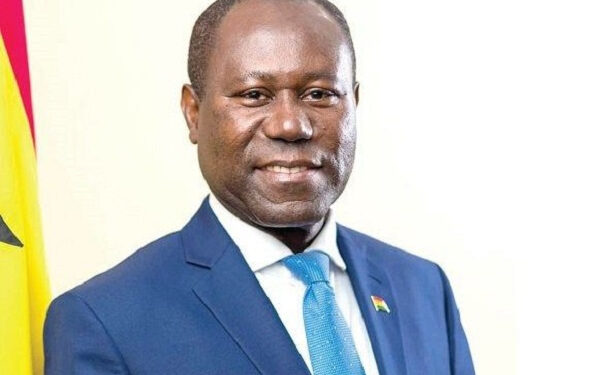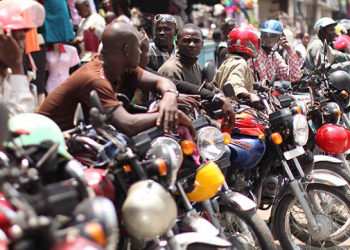The Chief Executive of CocoaBod has written an open letter to former President, John Dramani Mahama following his social media post after the announcement of the Producer Price of Cocoa.
He writes: OPEN LETTER TO FORMER PRESIDENT JOHN DRAMANI MAHAMA
Dear Mr. Mahama,
I have read your post on social media following the announcement of the Producer Price of cocoa, and it has become imperative to address certain misconceptions and misinformation that have arisen from your post. While advocating for the welfare of our hard-working cocoa farmers is essential, it is equally important to approach the issue in good faith and consider the broader context before passing judgment.
Since you have had the privilege of being in government as the number one gentleman of the country, it is expected that you would be familiar with the process for determining the producer price of cocoa. I am, therefore, surprised that you chose, rather erroneously, to use the current international market price of cocoa at $3,600 per tonne as the basis for your calculation in your post on the recently-announced producer price.
Reasons
I. You are fully aware that Ghana’s cocoa beans is mostly sold forward. This means that the 2023/24 crop was sold between October 2022 and March 2023 at international prices, ranging between $2,200 per tonne and $2,400 per tonne. The international price of cocoa then began to increase in April 2023, when a greater percentage of the 2023/24 crop had already been sold.
II. The forward sale strategy enables COCOBOD to give farmers a guaranteed producer price and raise the syndicated loan offshore to pay farmers promptly for their produce.
III. The international price of cocoa as alluded to, is quoted on CIF (Cost, Insurance and Freight) basis which include insurance and freight, albeit COCOBOD receive only the FOB price (which is cost of beans only). Insurance and freight are received by the insurance companies and shipping lines respectively.
IV. Additionally, Mr Mahama, Ghana produces both the Main Crop size category of beans (big sized cocoa beans), and the Light Crop size category of beans (small sized cocoa beans). The light crop beans are sold at a discount; ranging from 20% to 40% on the international market. The FOB price received by COCOBOD from the international market is therefore the weighted average price of both the main crop and light crop beans. This situation depresses the average weighted FOB price received by COCOBOD for the two-crop categories (main and light crop beans) which form the basis for the determination of the producer price for cocoa.
V. For the 2023/24 season, the weighted average FOB achieved by COCOBOD was $2,600 per tonne.
VI. Contrary to your assertion that the producer price of GHc1,308 per bag for the 2023/24 season is paltry, the current producer price translates to $1,821 per tonne, which is 70.03% of the Gross FOB of $2,600 per tonne.
VII. In the 2015/16 season, the NDC-led administration, announced a producer price of GHC6,800 per tonne. This was 61.71% of the gross FOB of $2,900 per tonne at the time, and not the 66.06% as you alluded. This cannot be said to be better than the 70.03% achieved for the 2023/24 season.
VIII. Also, key parameters such as the exchange rate and production volumes which could have influenced an increase in the Gross FOB were not significant to trigger an increase in producer price beyond GHC1,308 per bag.
It is significant to note that the operational cost of COCOBOD for the 2023/24 season is
about 4% of the gross FOB, hence the rest of the share of the FOB goes into industry costs,
LBC margins, and transportation. Generally, the operational cost of COCOBOD has hovered around 4% to 5% of gross FOB since the NPP took over government.
It is also worth noting that government, through COCOBOD, has invested heavily in
productivity-enhancement programmes such as the mass spraying, pruning, hand pollination, rehabilitation of diseased farms and the subsidized fertilizer programmes.
The implementation of the productivity-enhancement programmes has led to an increase in productivity of cocoa farms from an average of 450 kilos per hectare in 2015/16 season to an average of 650 kilos per hectare in the 2022/23 season. This has led to an increase in the
income of cocoa farmers.
It is my considered view that this explanation would be a useful guide and source of information in your future engagements on the topic.
Your friend and former colleague,
Hon Joseph Boahen Aidoo
Chief Executive,
Ghana Cocoa Board.
Read more news here


